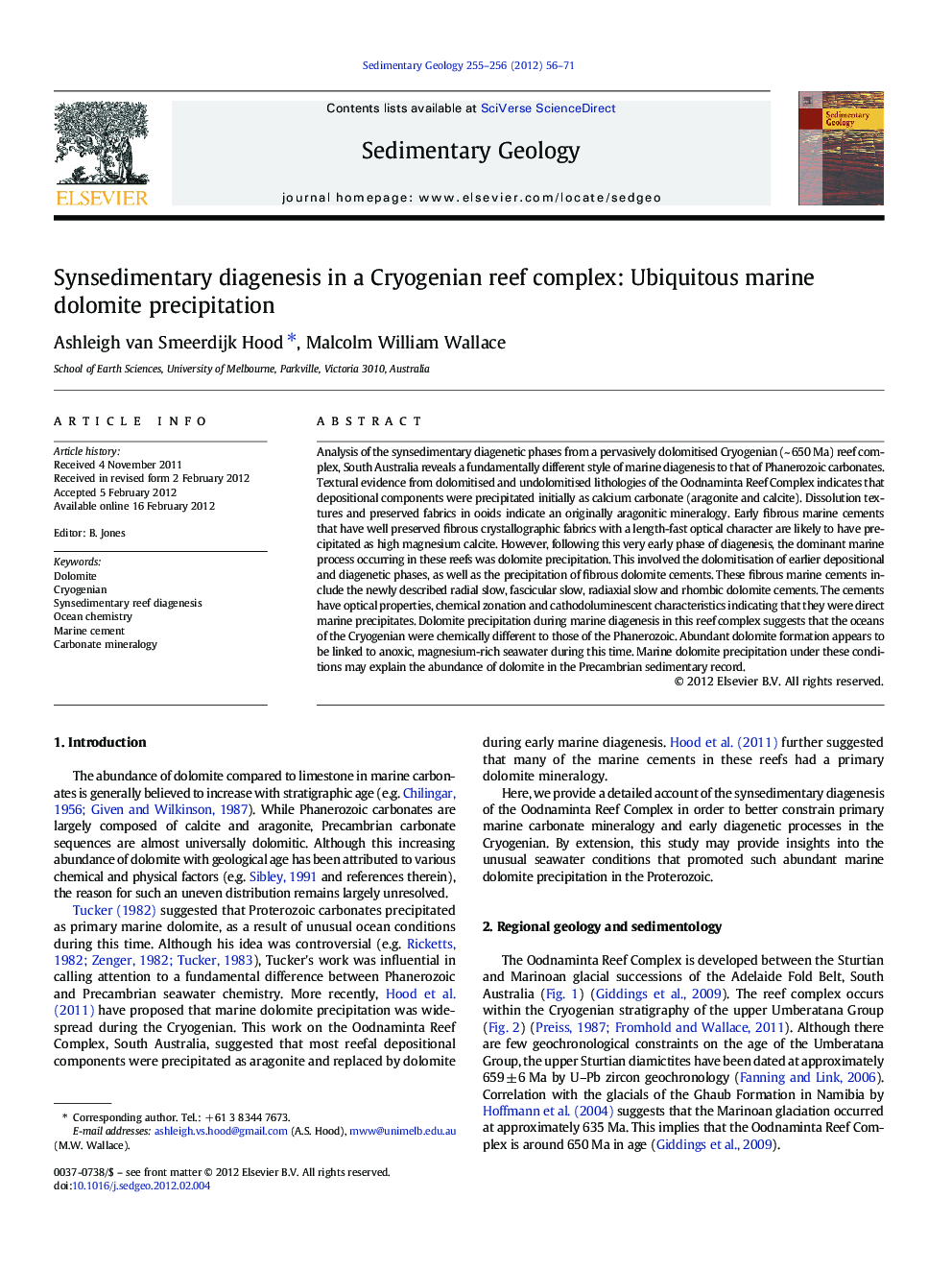| Article ID | Journal | Published Year | Pages | File Type |
|---|---|---|---|---|
| 4689849 | Sedimentary Geology | 2012 | 16 Pages |
Analysis of the synsedimentary diagenetic phases from a pervasively dolomitised Cryogenian (~ 650 Ma) reef complex, South Australia reveals a fundamentally different style of marine diagenesis to that of Phanerozoic carbonates. Textural evidence from dolomitised and undolomitised lithologies of the Oodnaminta Reef Complex indicates that depositional components were precipitated initially as calcium carbonate (aragonite and calcite). Dissolution textures and preserved fabrics in ooids indicate an originally aragonitic mineralogy. Early fibrous marine cements that have well preserved fibrous crystallographic fabrics with a length-fast optical character are likely to have precipitated as high magnesium calcite. However, following this very early phase of diagenesis, the dominant marine process occurring in these reefs was dolomite precipitation. This involved the dolomitisation of earlier depositional and diagenetic phases, as well as the precipitation of fibrous dolomite cements. These fibrous marine cements include the newly described radial slow, fascicular slow, radiaxial slow and rhombic dolomite cements. The cements have optical properties, chemical zonation and cathodoluminescent characteristics indicating that they were direct marine precipitates. Dolomite precipitation during marine diagenesis in this reef complex suggests that the oceans of the Cryogenian were chemically different to those of the Phanerozoic. Abundant dolomite formation appears to be linked to anoxic, magnesium-rich seawater during this time. Marine dolomite precipitation under these conditions may explain the abundance of dolomite in the Precambrian sedimentary record.
► Cryogenian reefs host marine dolomite precipitation during early diagenesis. ► Dolomite replaced calcium carbonate and precipitated directly as marine cements. ► Dolomite precipitation could be linked to anoxic, high Mg/Ca oceans. ► Marine dolomite of this type could explain Precambrian dolomite abundance.
